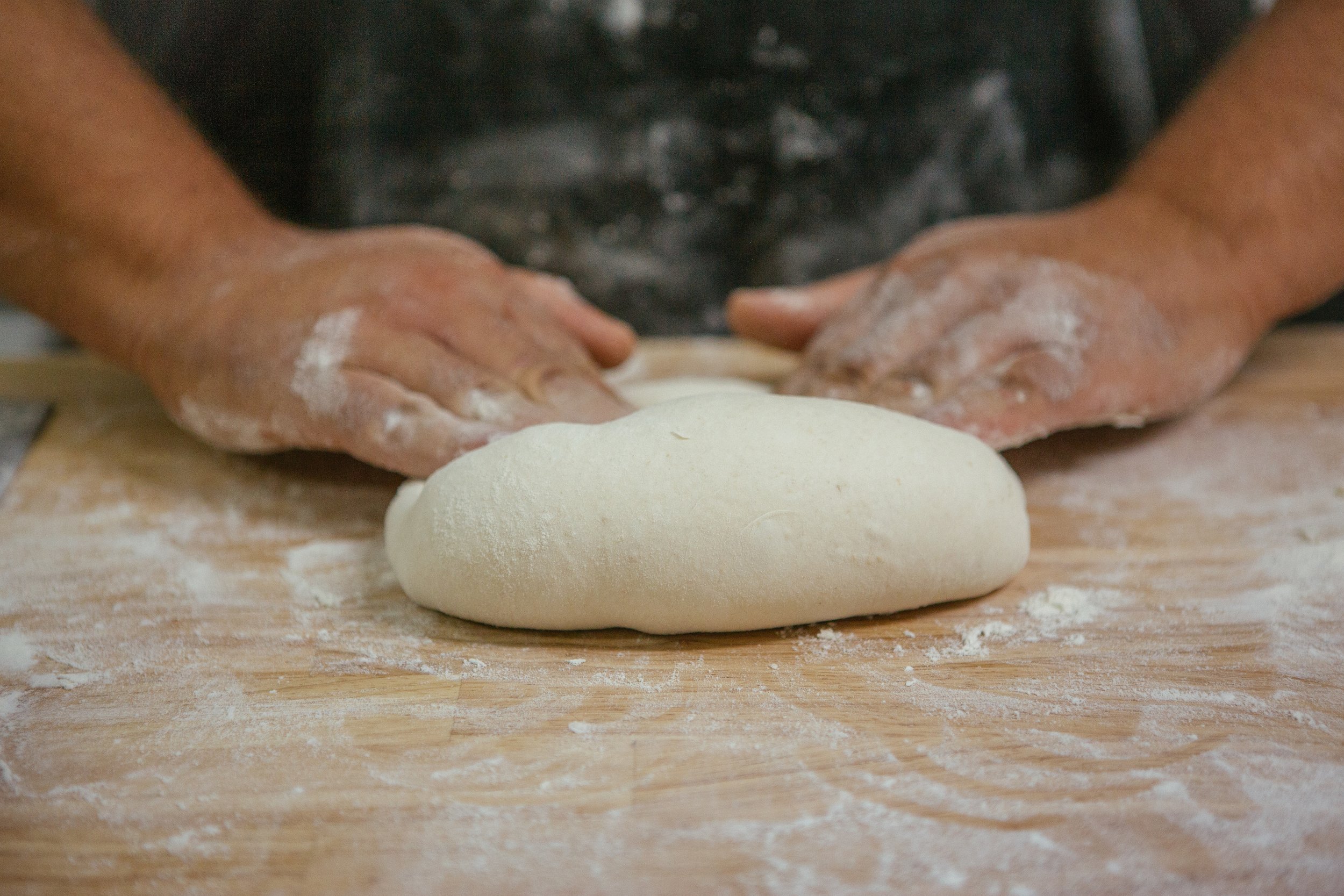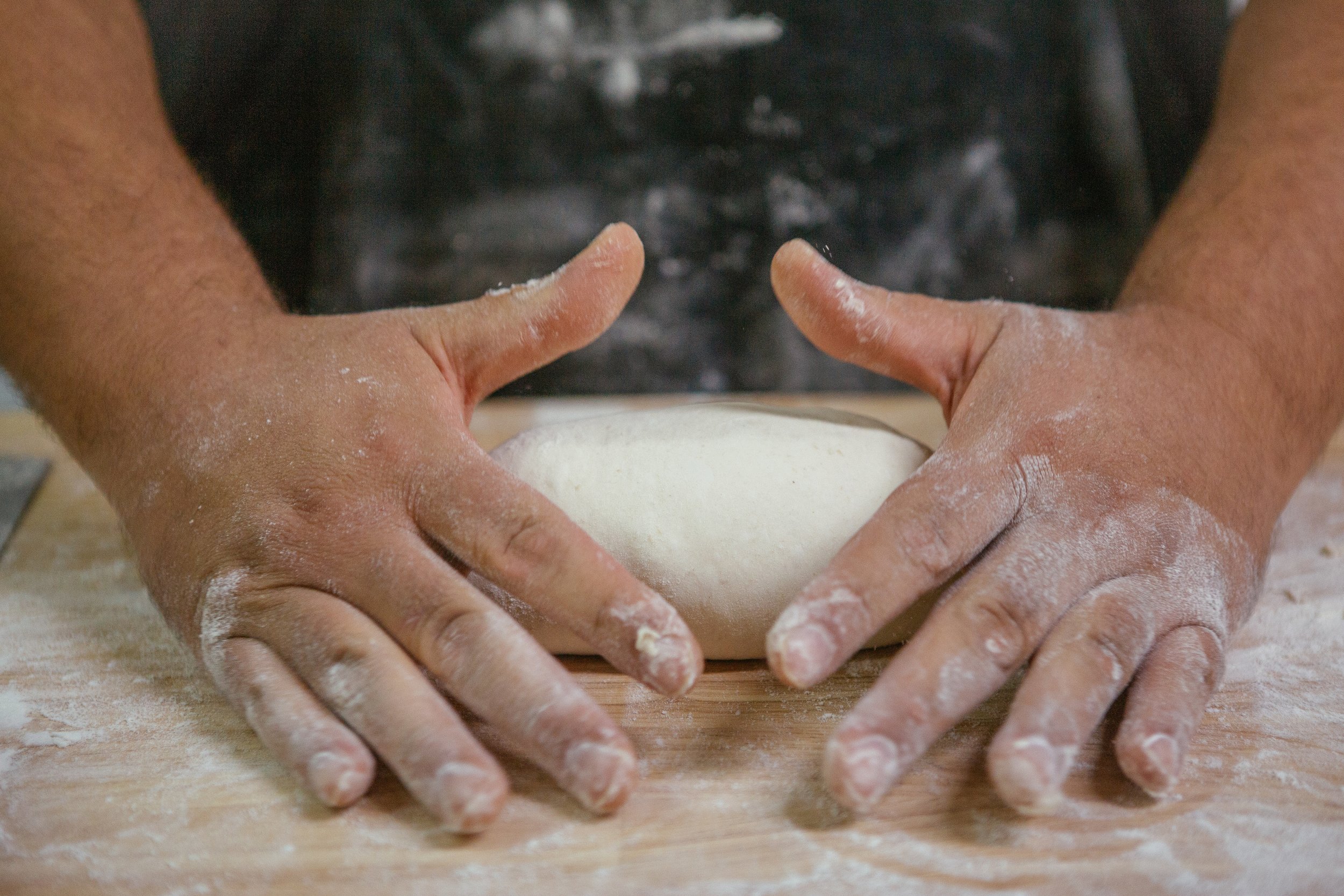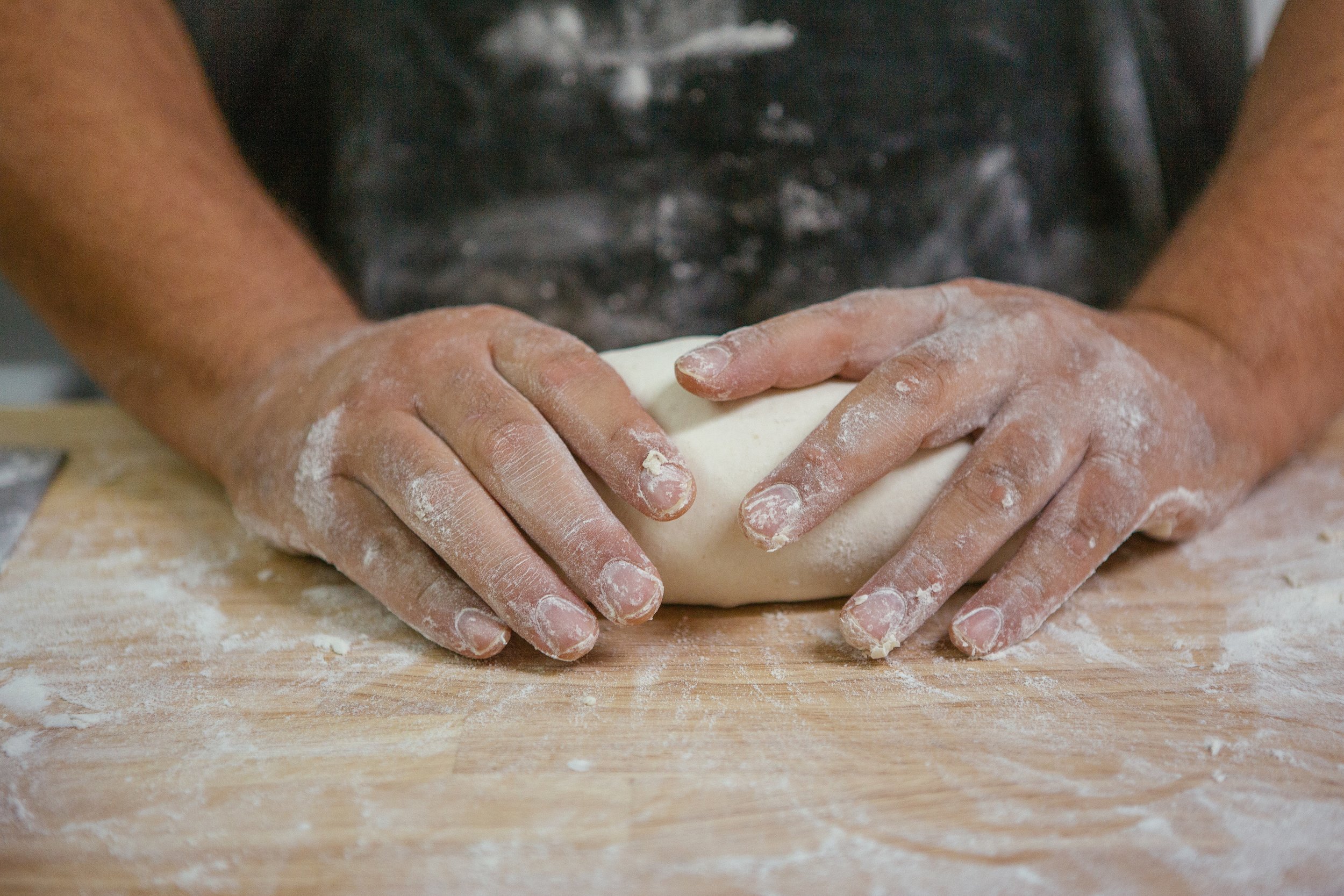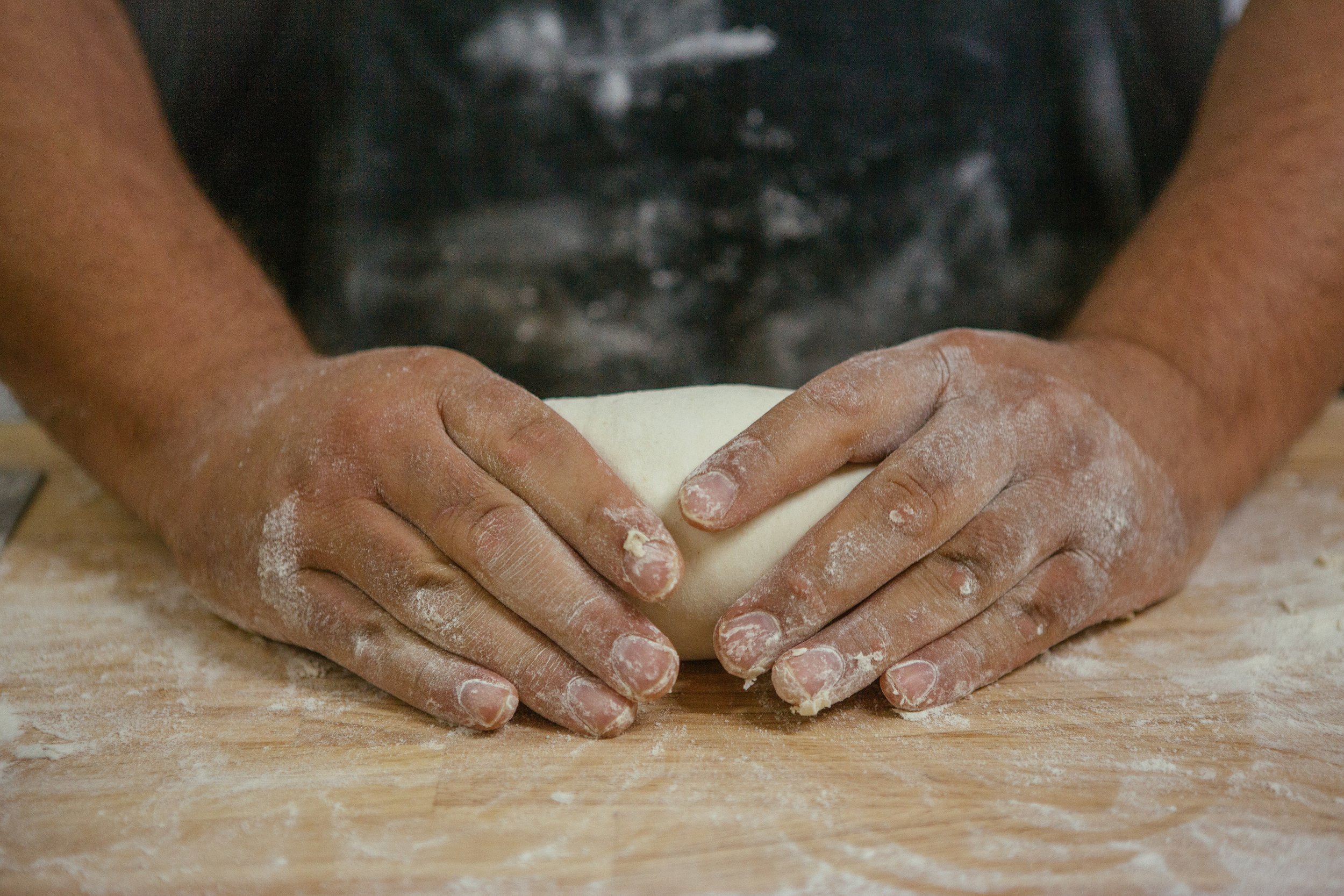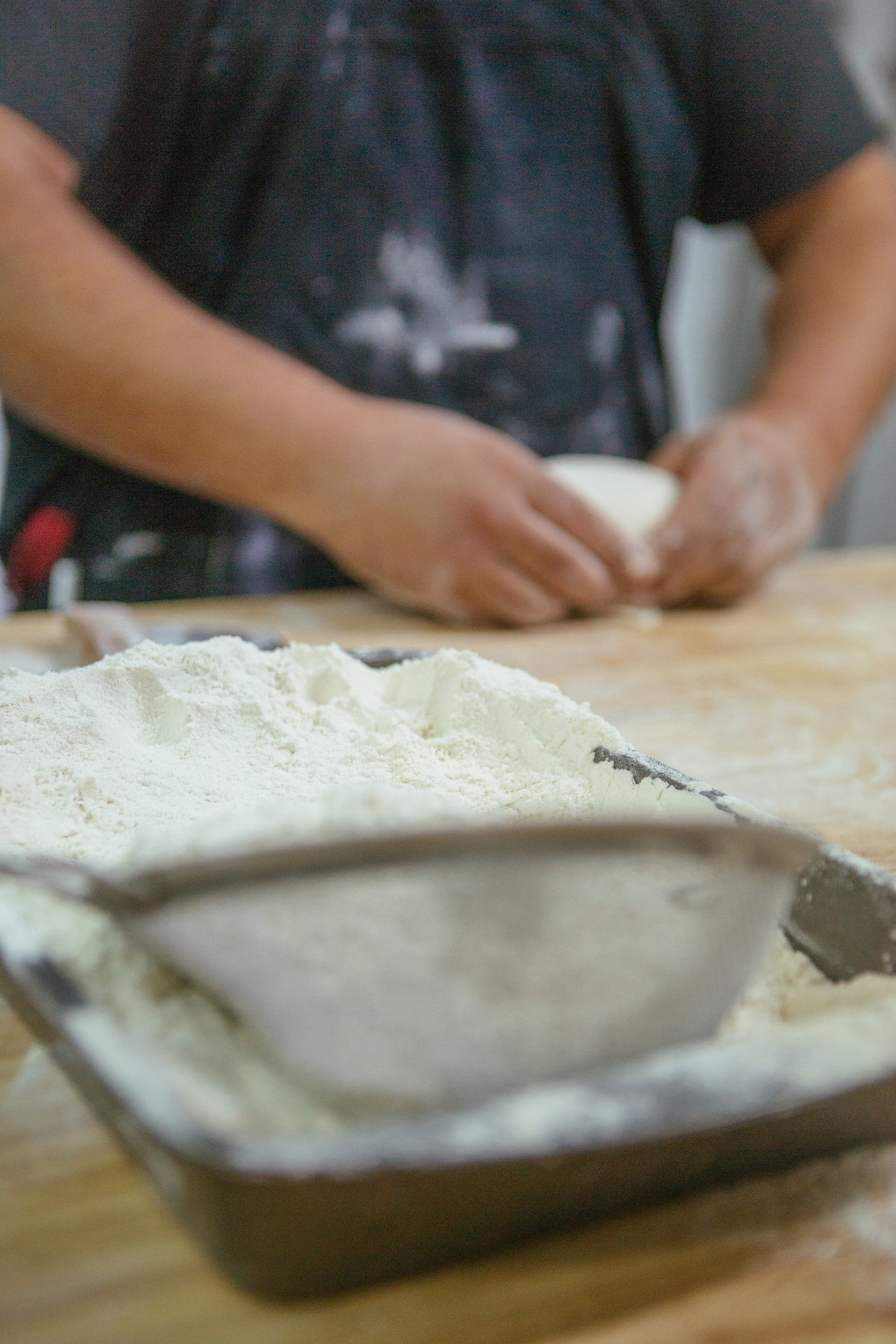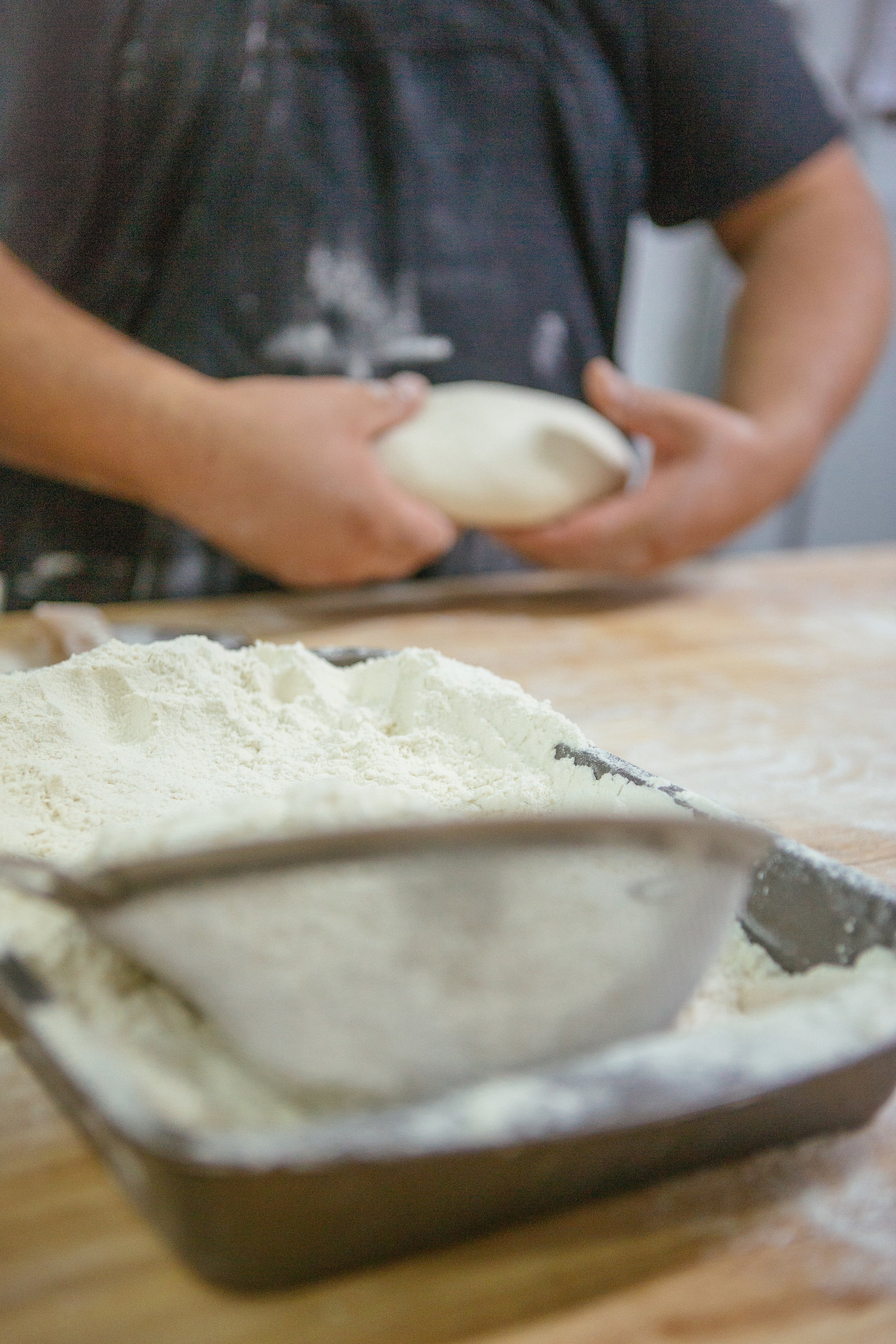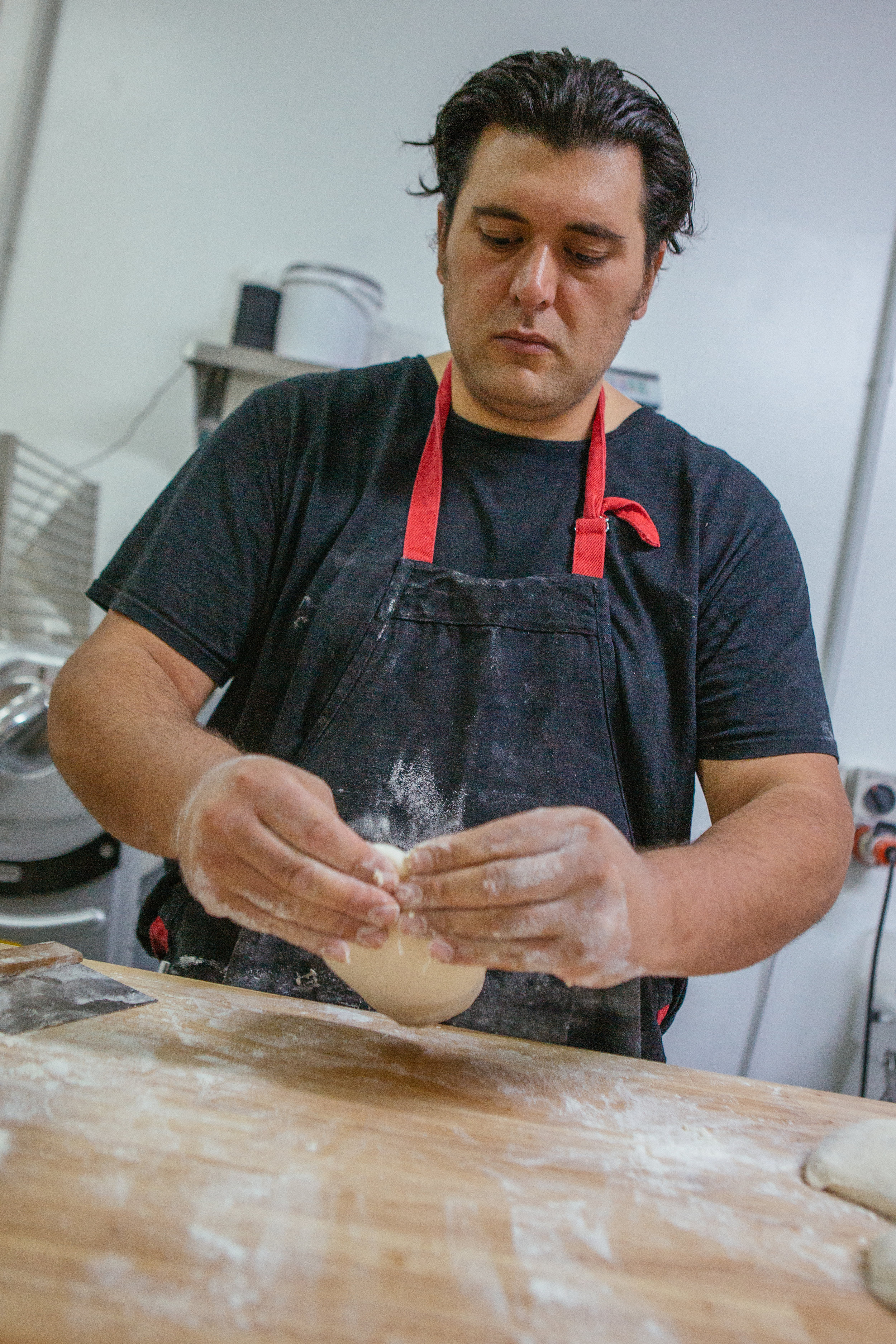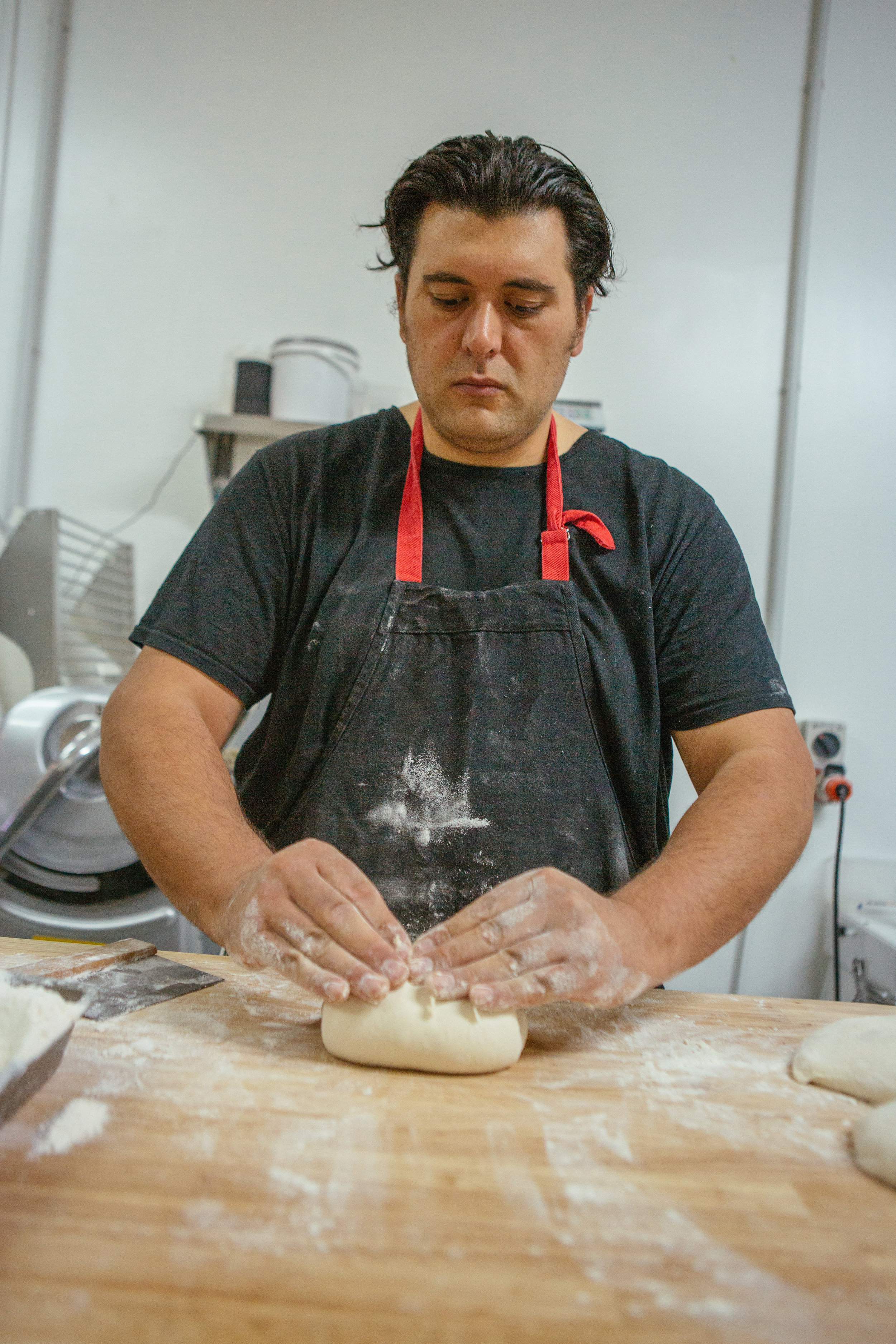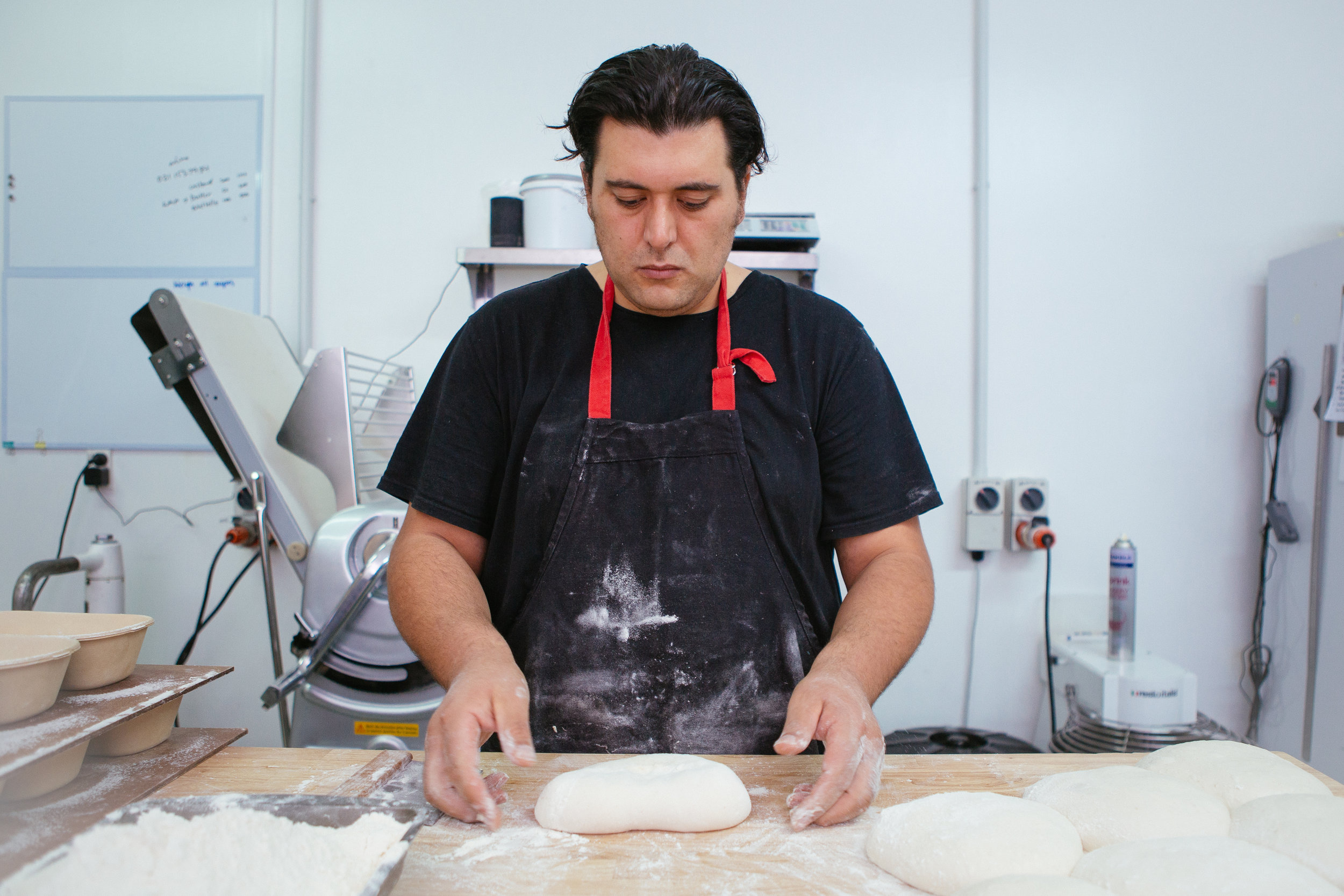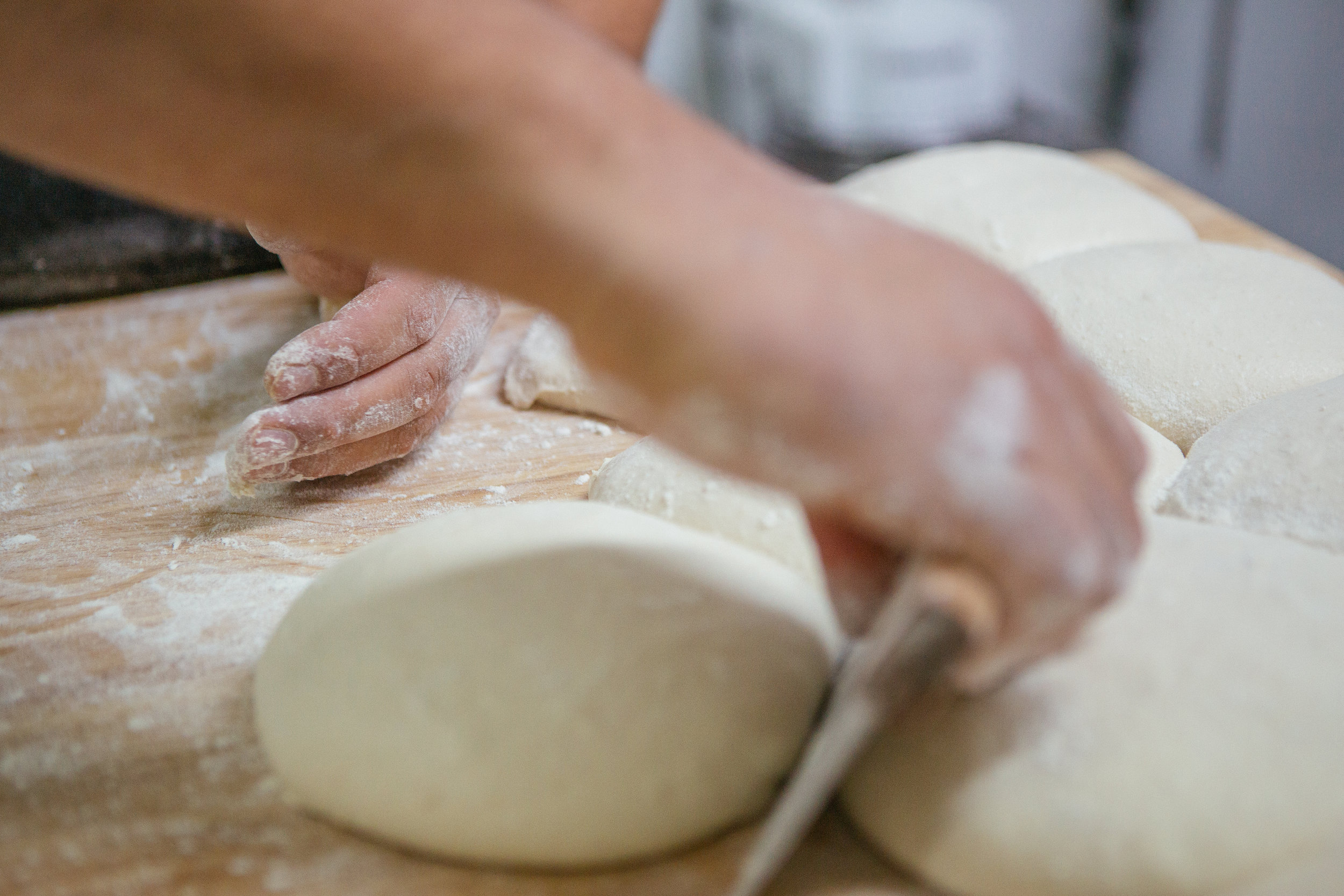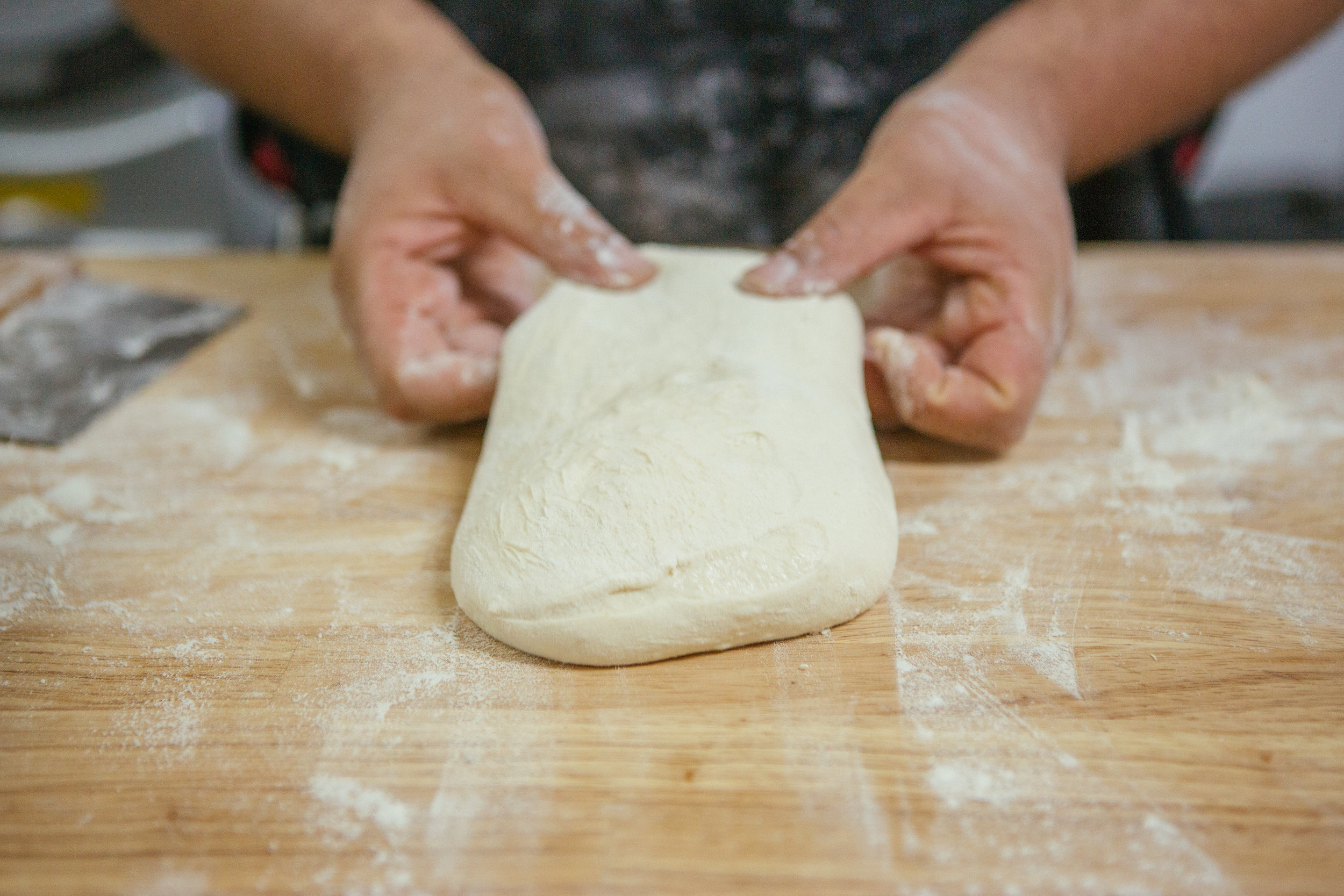It’s all ‘back to basics’ in the world of food these days… people want to know where their food is coming from and who exactly is making it. On Instagram, there’s a #knowyourbaker following. So who is Dusty?
Dusty is Ngati Whatua, Ngapuhi, and Pakeha; based in Auckland, New Zealand. He was raised in in a wrecker’s yard in ‘rewa, which means he knows his car parts and can generally fix it when it breaks. If he can’t fix it, he’ll just push it. He could fill a book with funny stories about the pranks they used to play on each other in his Dad’s yard. Dusty’s dexterity, strength and ability to think outside the box come from that wrecker’s yard. Nevertheless, eight years ago, Dusty gave up cars and moved into the kitchen. He’s been baking bread every day since then and he still loves it.
Dusty’s big passion is the hand-crafted style - traditional breads; grain-to-loaf and everything in between. He loves the long fermentation and the life of the dough. He especially loves working with his hands and doing something that connects him with so many of those who have gone before him. (His Nani-Nani was also a baker and you should totally get him to make you her rewana!).
Actually, Dusty pretty much loves everything about bread except the early starts, so he’s turned that one tiny little negative into a positive and taken up listening to podcasts until Dan comes in at 5 (I’ll introduce you to Dan soon!).
If you want to meet Dusty, you are always welcome in the bakery (doors open at 2am; midnight on a busy day!)
#localfood #localgrain #knowyourfarmer #knowyourmiller #smallfoodnotbigfood
